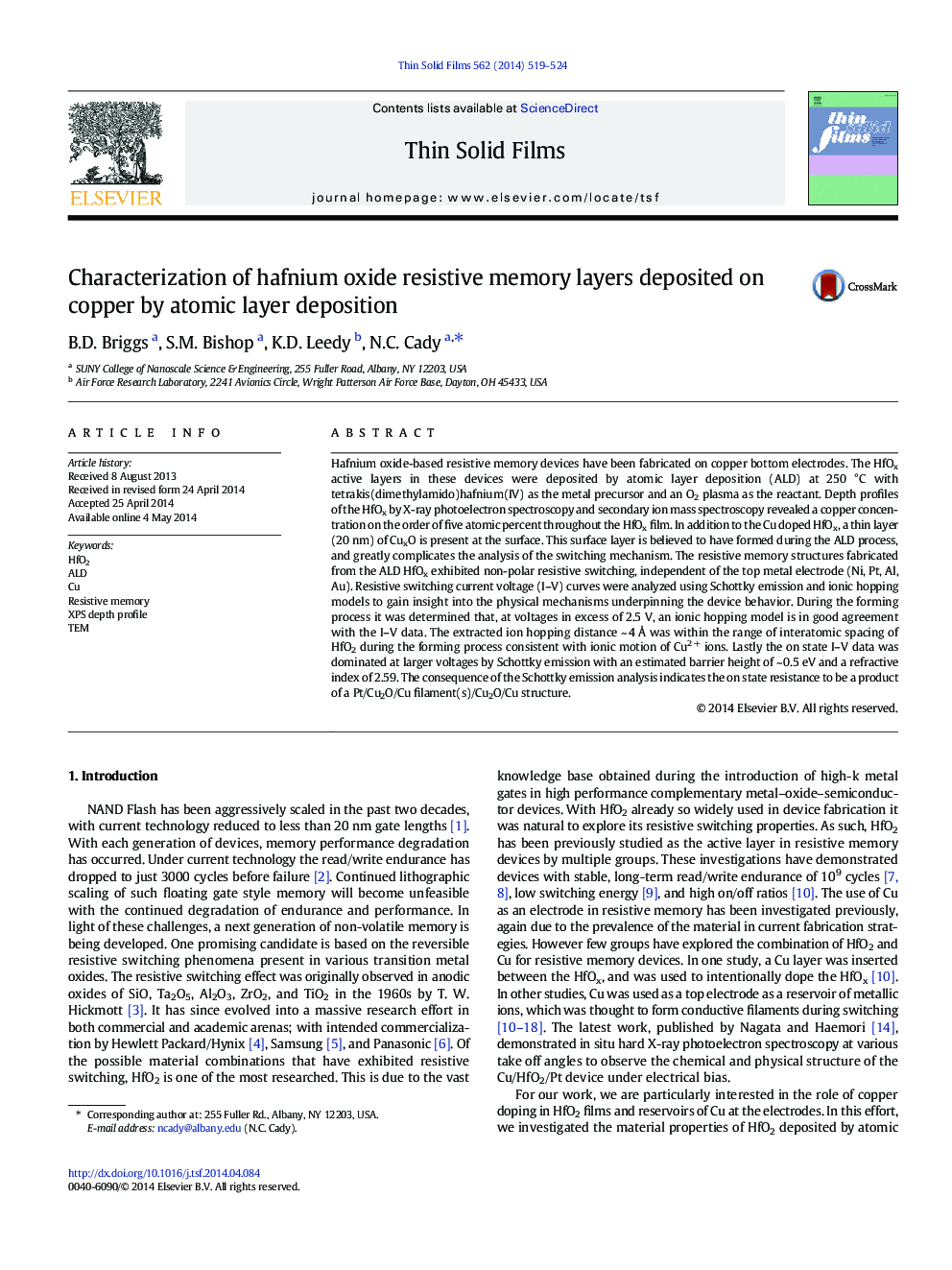| Article ID | Journal | Published Year | Pages | File Type |
|---|---|---|---|---|
| 1665228 | Thin Solid Films | 2014 | 6 Pages |
•HfO2 was grown via atomic layer deposition at 250 and 100 °C on Cu substrates.•A Cu2O surface layer and Cu doping were observed in post-deposition of HfO2.•Resistive memory devices were fabricated and observed in non-polar switching.•Forming of devices was attributed to ionic drift of Cu cations through HfO2.•On state resistance was dominated by Schottky emission at voltages > 0.8 V.
Hafnium oxide-based resistive memory devices have been fabricated on copper bottom electrodes. The HfOx active layers in these devices were deposited by atomic layer deposition (ALD) at 250 °C with tetrakis(dimethylamido)hafnium(IV) as the metal precursor and an O2 plasma as the reactant. Depth profiles of the HfOx by X-ray photoelectron spectroscopy and secondary ion mass spectroscopy revealed a copper concentration on the order of five atomic percent throughout the HfOx film. In addition to the Cu doped HfOx, a thin layer (20 nm) of CuxO is present at the surface. This surface layer is believed to have formed during the ALD process, and greatly complicates the analysis of the switching mechanism. The resistive memory structures fabricated from the ALD HfOx exhibited non-polar resistive switching, independent of the top metal electrode (Ni, Pt, Al, Au). Resistive switching current voltage (I–V) curves were analyzed using Schottky emission and ionic hopping models to gain insight into the physical mechanisms underpinning the device behavior. During the forming process it was determined that, at voltages in excess of 2.5 V, an ionic hopping model is in good agreement with the I–V data. The extracted ion hopping distance ~ 4 Å was within the range of interatomic spacing of HfO2 during the forming process consistent with ionic motion of Cu2 + ions. Lastly the on state I–V data was dominated at larger voltages by Schottky emission with an estimated barrier height of ~ 0.5 eV and a refractive index of 2.59. The consequence of the Schottky emission analysis indicates the on state resistance to be a product of a Pt/Cu2O/Cu filament(s)/Cu2O/Cu structure.
